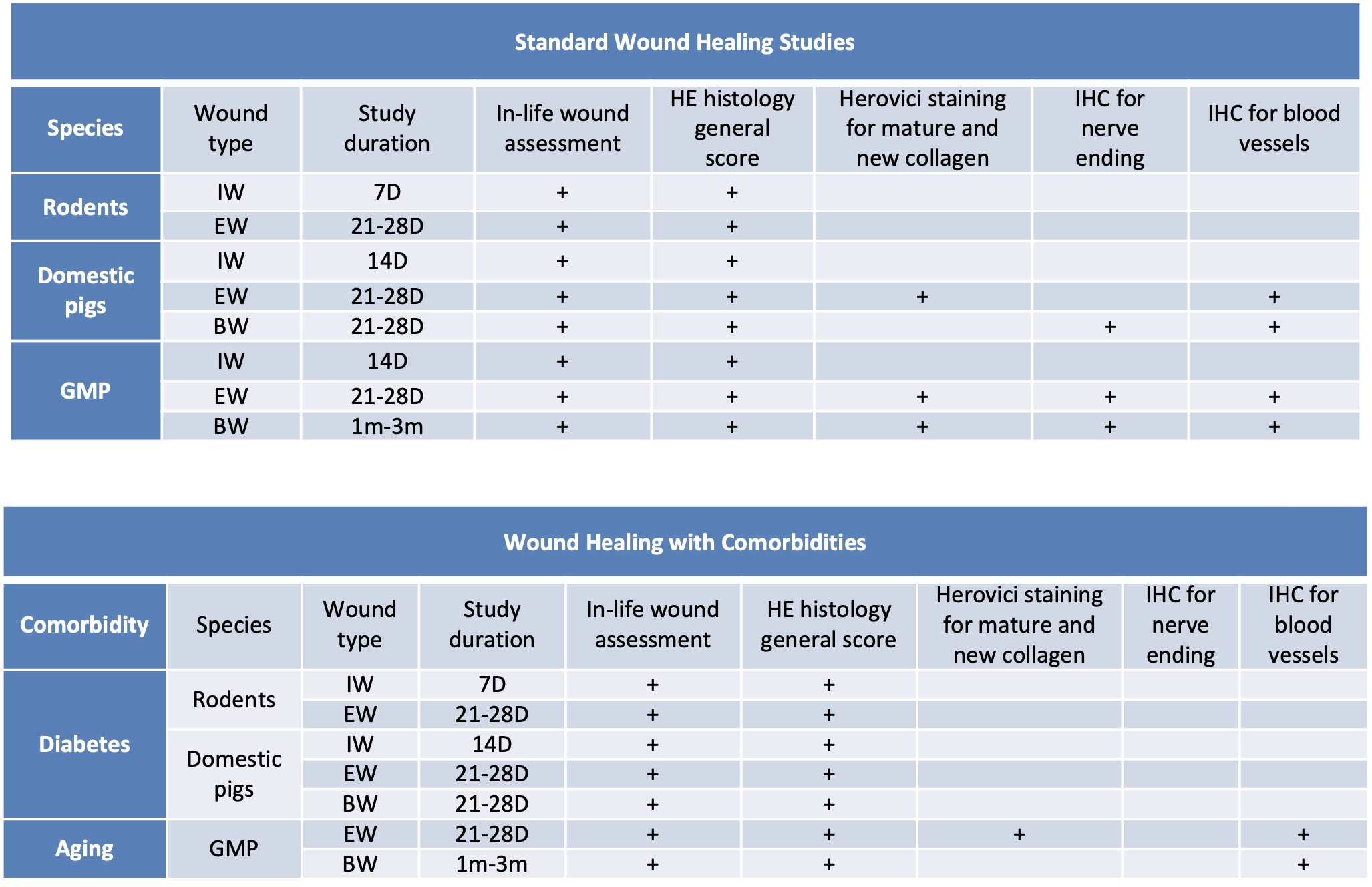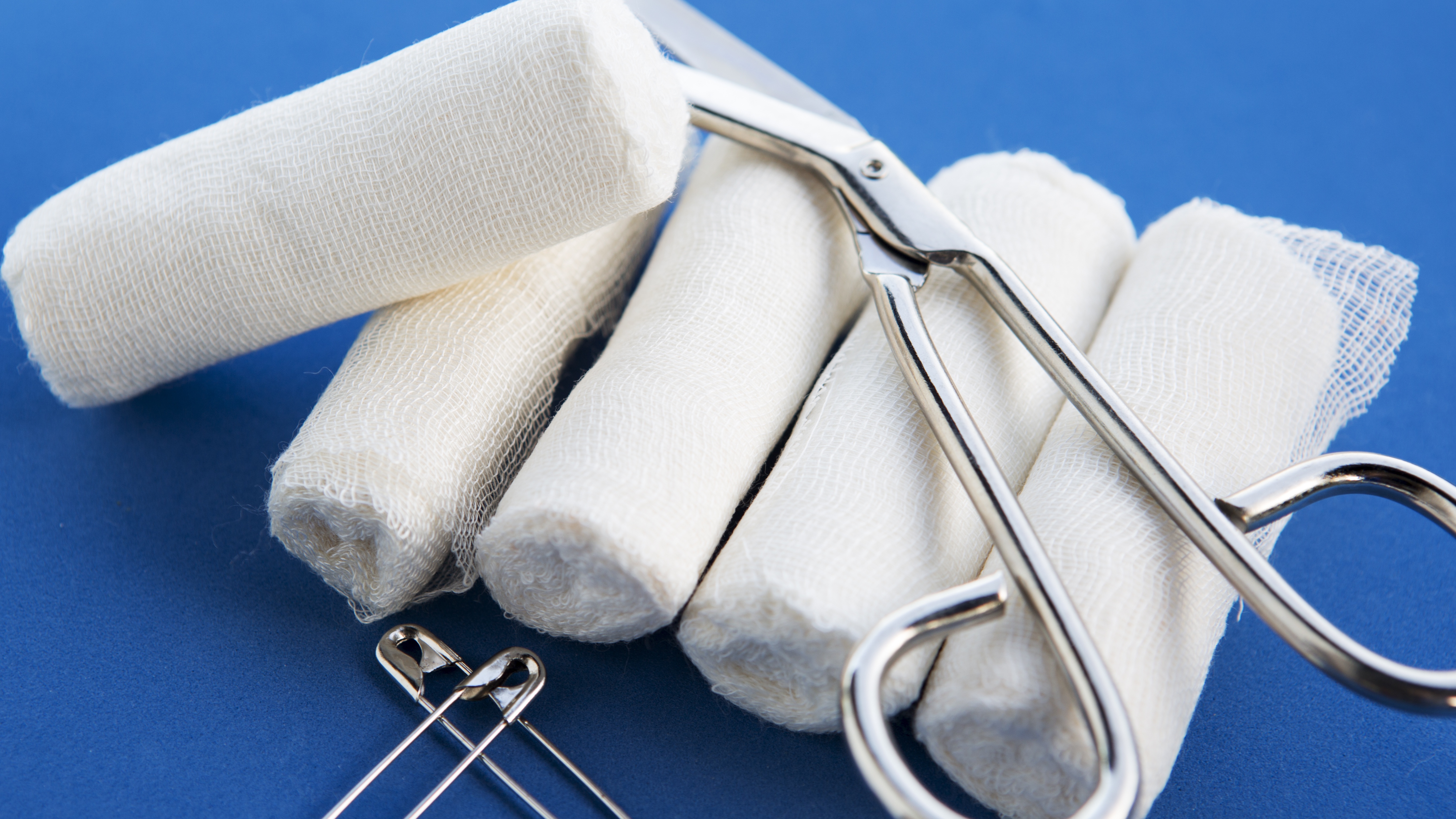It is important to bridge the gap between lab findings and clinical applications using translational models, ensuring effective translation for human clinical use. For wound healing, pigs stand out as a standard preclinical model due to their striking resemblance to humans, specifically in skin structure. While rodents are commonly used for their cost-effectiveness and ability to produce relevant data, their skin structure differs more significantly from humans compared to that of pigs.
Pig Models for Wound Healing
The pig has emerged as a valuable species for research, mimicking various aspects of the human condition, especially in therapeutic areas like cardiovascular health, skin or wound healing, metabolic processes, and pain management. Pigs are an ideal species due to their strong similarities in skin conductivity properties with humans: epidermal thickness closely resembles that of humans with well-developed retro-ridges, dermal papillary bodies, and abundant sub-dermal adipose tissue. Pigs also share more than 93% of skin biomarkers with humans.
Notably, both pigs and humans share the process of re-epithelialization during wound healing, differentiating them from rodents that undergo contraction. This shared characteristic makes pigs a suitable model for studying skin regeneration. These studies can be conducted in both domestic pigs and Gottingen minipigs, each offering distinct advantages. Domestic pigs are often used for shorter studies as they gain weight rapidly, while Gottingen minipigs are a smaller breed with slower weight gain. Read more about the differences between domestic pigs and minipigs here.
MD Biosciences offers pig models to evaluate the wound healing process created by incisional wounds, those that results from surgical procedures, excisional wounds formed through the removal of tissue, and burn wounds, caused by damage to the skin from sources like heat or chemicals. Comorbidities, like diabetes, age or sex, play a role in wound healing as well. These models are also performed at MD Biosciences. Gross pathology, histology and inflammatory scoring of the wounds are all standard measures. Additional pain evaluation as well as biomarkers can also be assessed.

Key: IW = incisional wound, EW = excisional wound, BW = burn wound
How does diabetes affect wound healing?
People with diabetes can have impaired wound healing due to various factors related to the condition. Diabetes disrupts insulin production, hindering the body's ability to manage blood glucose effectively. This then impairs the function of white blood cells, which are essential for healing wounds and maintaining immunity. The dampened immune system also makes individuals more susceptible to infection, resulting in slower wound healing.
Diabetic Wound Models
Diabetes is induced with streptozotocin (STZ). Excisional wounds are then created 2-3 weeks later and confirmed through the increase of the blood glucose levels.
Learn more in this research publication featuring our diabetic wound model.
Download the datasheet on wound healing.




